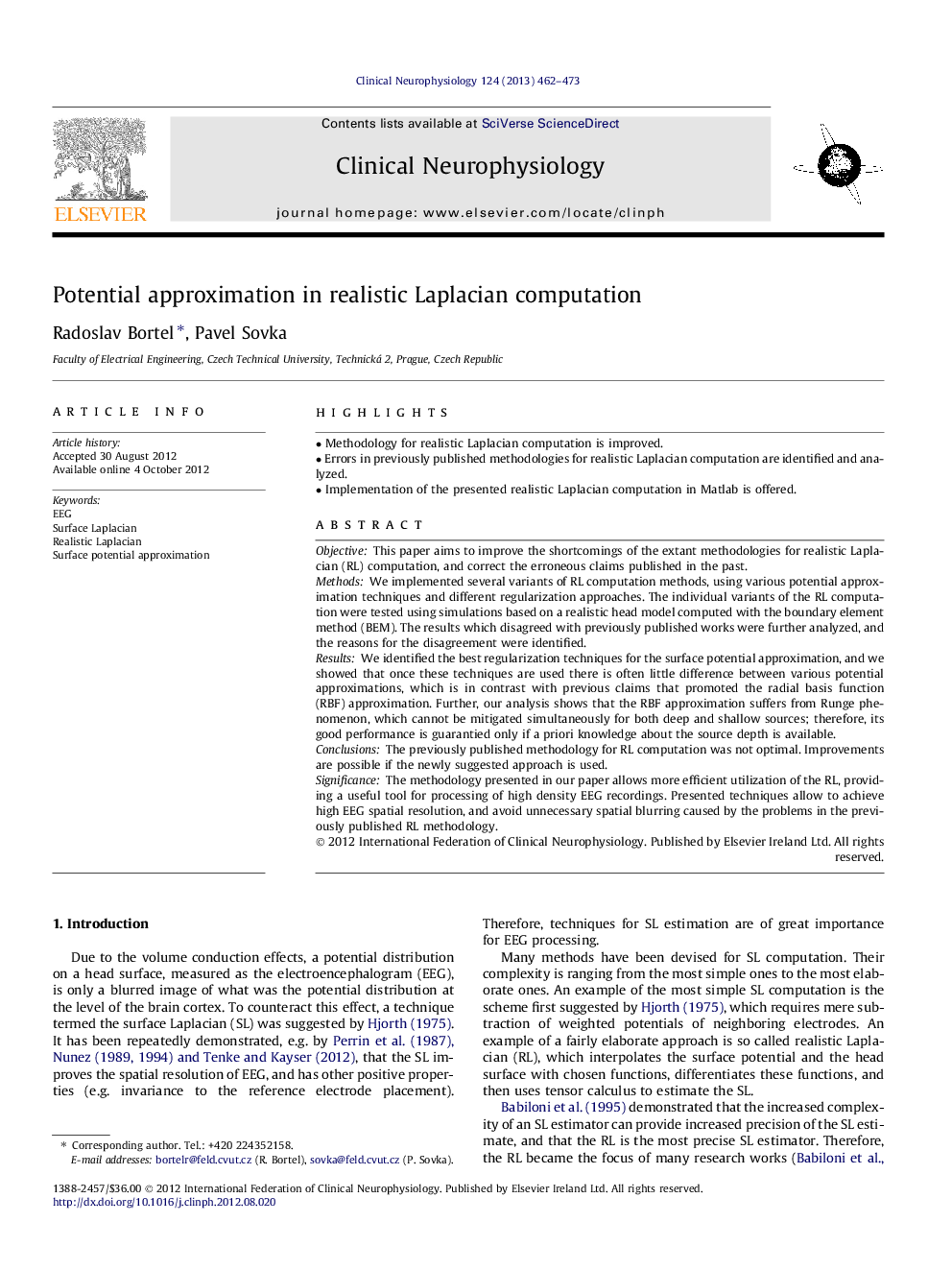| Article ID | Journal | Published Year | Pages | File Type |
|---|---|---|---|---|
| 3044357 | Clinical Neurophysiology | 2013 | 12 Pages |
ObjectiveThis paper aims to improve the shortcomings of the extant methodologies for realistic Laplacian (RL) computation, and correct the erroneous claims published in the past.MethodsWe implemented several variants of RL computation methods, using various potential approximation techniques and different regularization approaches. The individual variants of the RL computation were tested using simulations based on a realistic head model computed with the boundary element method (BEM). The results which disagreed with previously published works were further analyzed, and the reasons for the disagreement were identified.ResultsWe identified the best regularization techniques for the surface potential approximation, and we showed that once these techniques are used there is often little difference between various potential approximations, which is in contrast with previous claims that promoted the radial basis function (RBF) approximation. Further, our analysis shows that the RBF approximation suffers from Runge phenomenon, which cannot be mitigated simultaneously for both deep and shallow sources; therefore, its good performance is guarantied only if a priori knowledge about the source depth is available.ConclusionsThe previously published methodology for RL computation was not optimal. Improvements are possible if the newly suggested approach is used.SignificanceThe methodology presented in our paper allows more efficient utilization of the RL, providing a useful tool for processing of high density EEG recordings. Presented techniques allow to achieve high EEG spatial resolution, and avoid unnecessary spatial blurring caused by the problems in the previously published RL methodology.
► Methodology for realistic Laplacian computation is improved. ► Errors in previously published methodologies for realistic Laplacian computation are identified and analyzed. ► Implementation of the presented realistic Laplacian computation in Matlab is offered.
